Intent、Service。
意图-Intent
Intent的中文名是意图,意思是我想让你干什么,简单地说就是传递消息。
Intent是各个组件之间信息沟通的桥梁,既能在Activity之间沟通,又能在Activity与Service之间沟通,也能在Activity与Broadcast之间沟通。总而言之,Intent用于处理Android各组件之间的通信。
跳转
Activity间的跳转
1 |
Intent intent = new Intent(当前类.this,目标类名.class); |
传递消息
Intent用于处理Android各组件之间的通信,需要完成以下3个步骤:
- Intent需标明本次通信请求从哪来、到哪去、要怎么走。
- 发起方携带本次通信需要的数据内容,接收方对收到的Intent数据进行解包。
- 如果发起方要求接收方的处理结果,Intent就要负责让接收方传回应答的数据内容。
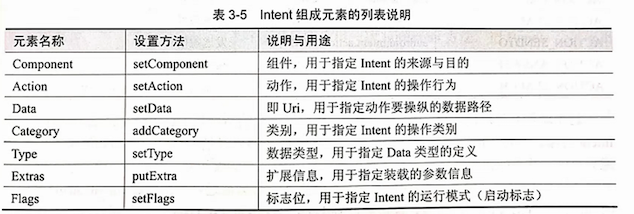
显式Intent
显式Intent,直接指定来源类与目标类名,属于精确匹配。
在声明一个Intent对象时,需要指定两个参数,第一个参数表示跳转的来源页面,第二个参数表示接下来要跳转到的页面类。
隐式Intent
隐式Intent,没有明确指定要跳转的类名,只给出一个动作让系统匹配拥有相同定义的目标,属于模糊匹配。
不希望直接暴露源码的类名,只给出一个事先定义好的名称,所以隐式Intent起到了过滤作用。这个定义好的动作名称是一个字符串,可以是自己定义的动作,也可以是已有的系统动作。
创建Intent实例
创建Intent实例的三种方式:
在构造函数中指定
1
Intent intent = new Intent(当前类.this,目标类名.class);//创建一个目标确定的意图
调用setClass方法指定
1
2Intent intent = new Intent();//创建一个新意图
intent.setClass(当前类.this,目标类名.class);//设置意图要跳转的活动类调用setComponent方法指定
1
2
3Intent intent = new Intent();//创建一个新意图
ComponentName component = new ComponentName(当前类.this,目标类名.class);
intent.setComponent(component);//设置意图 携带的组件信息
代码示例
不携带数据
携带数据
携带数据且有返回
第2、3方式:
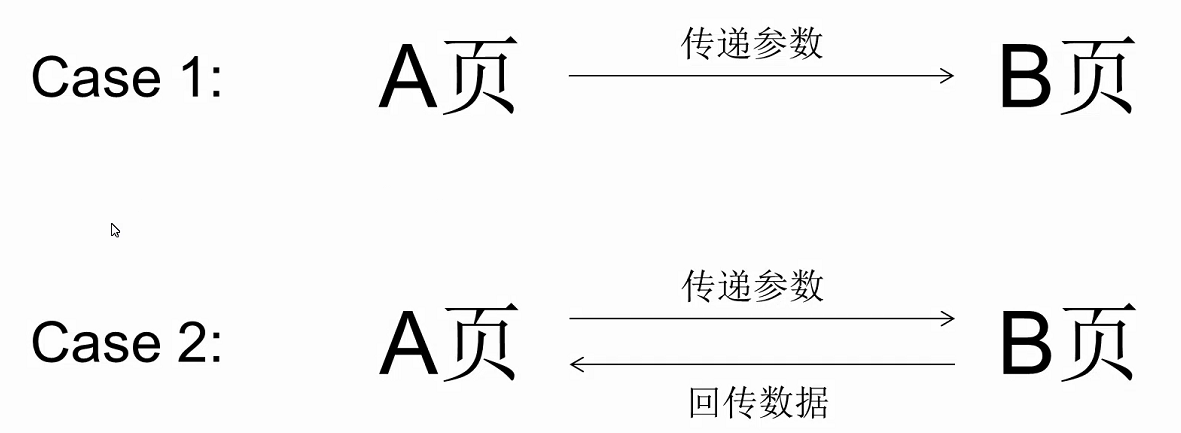
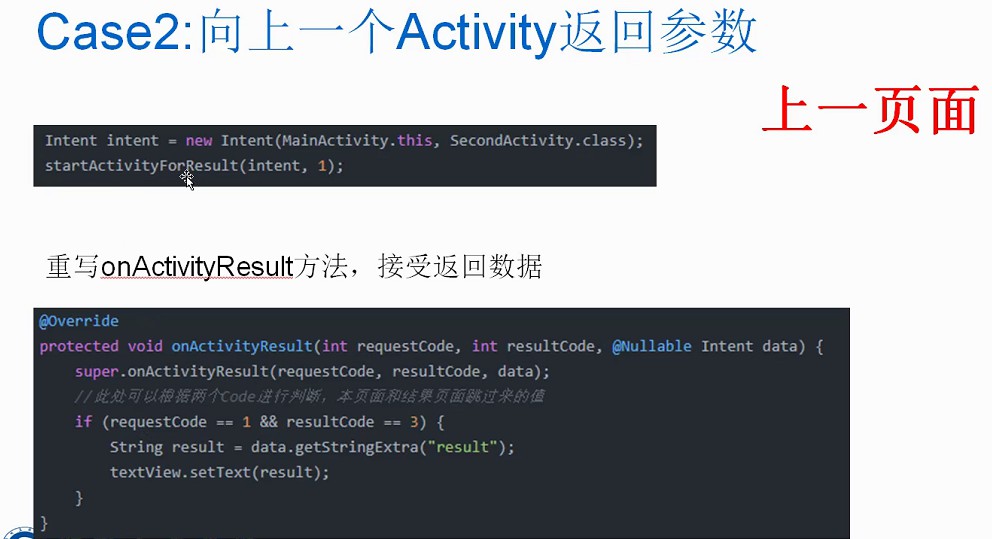
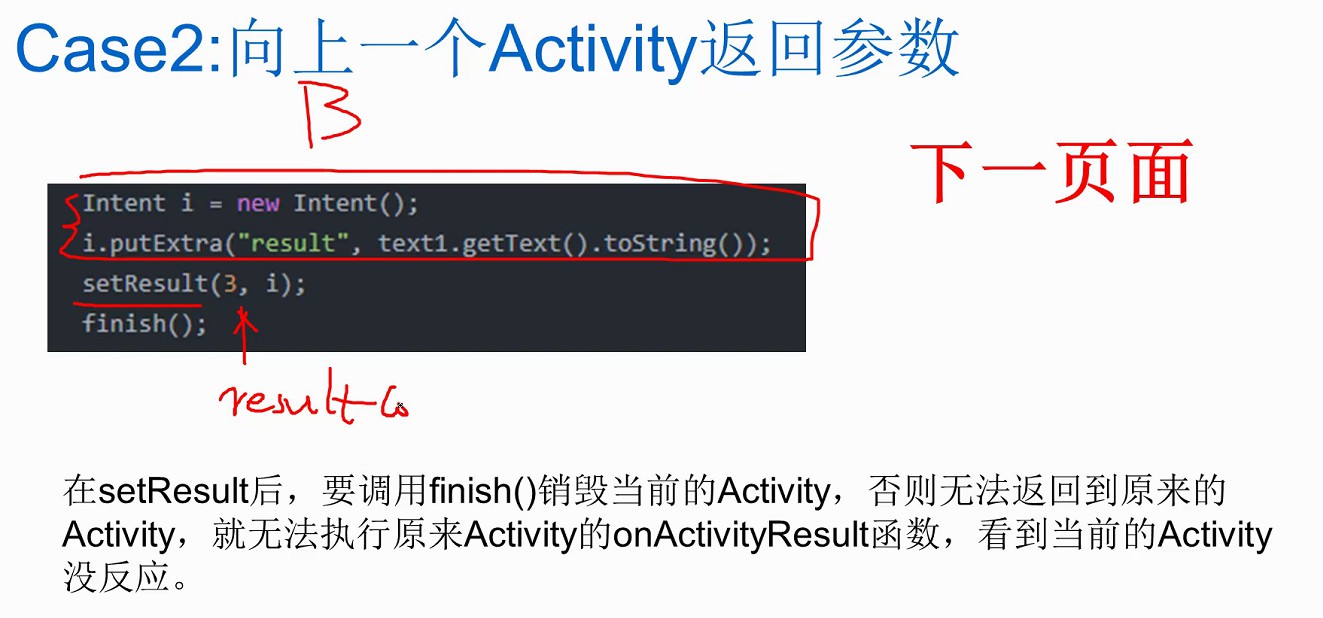
Service
service服务,在后台运行。看不见。
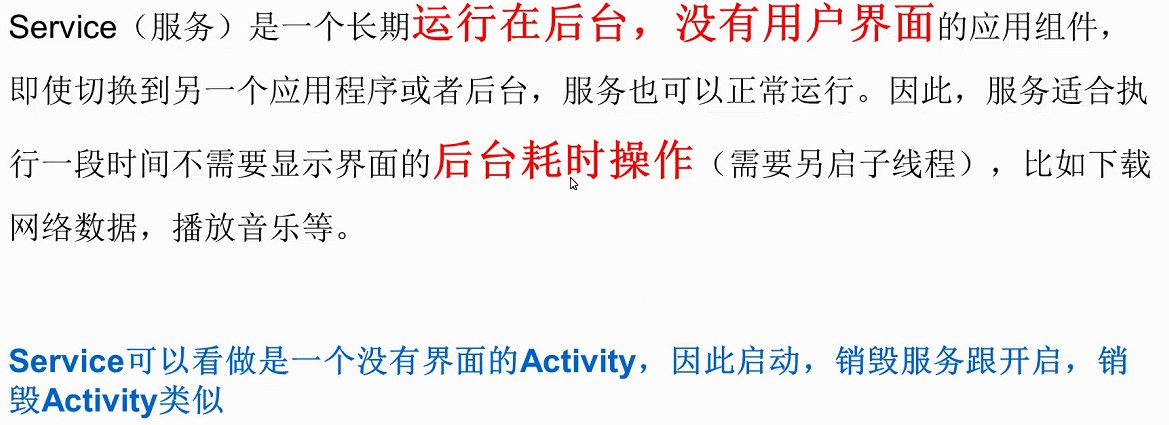
继承结构图:
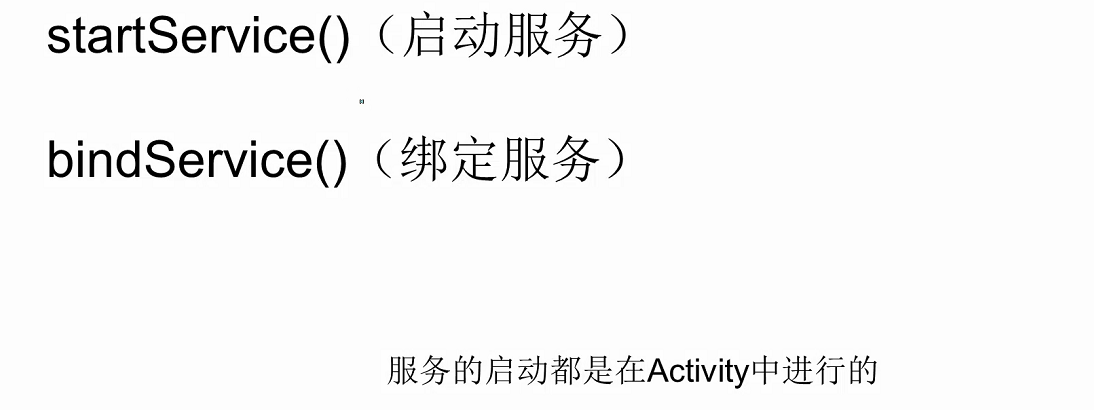
服务启动
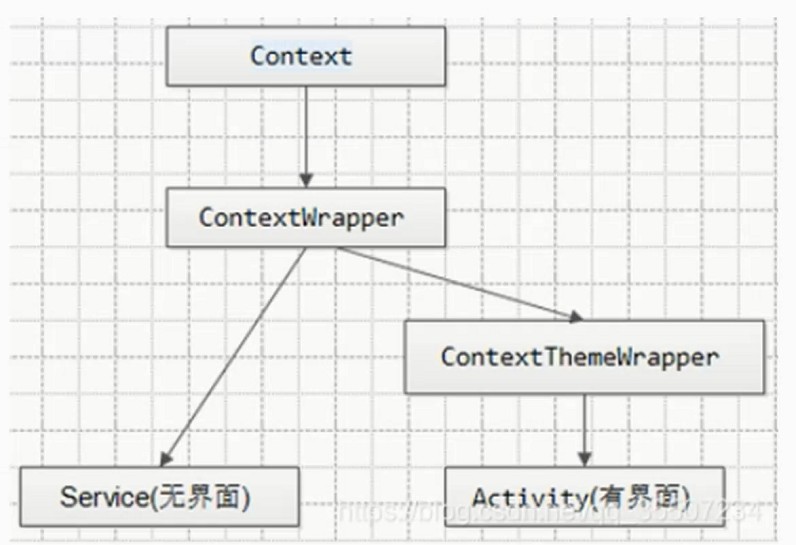
生命周期
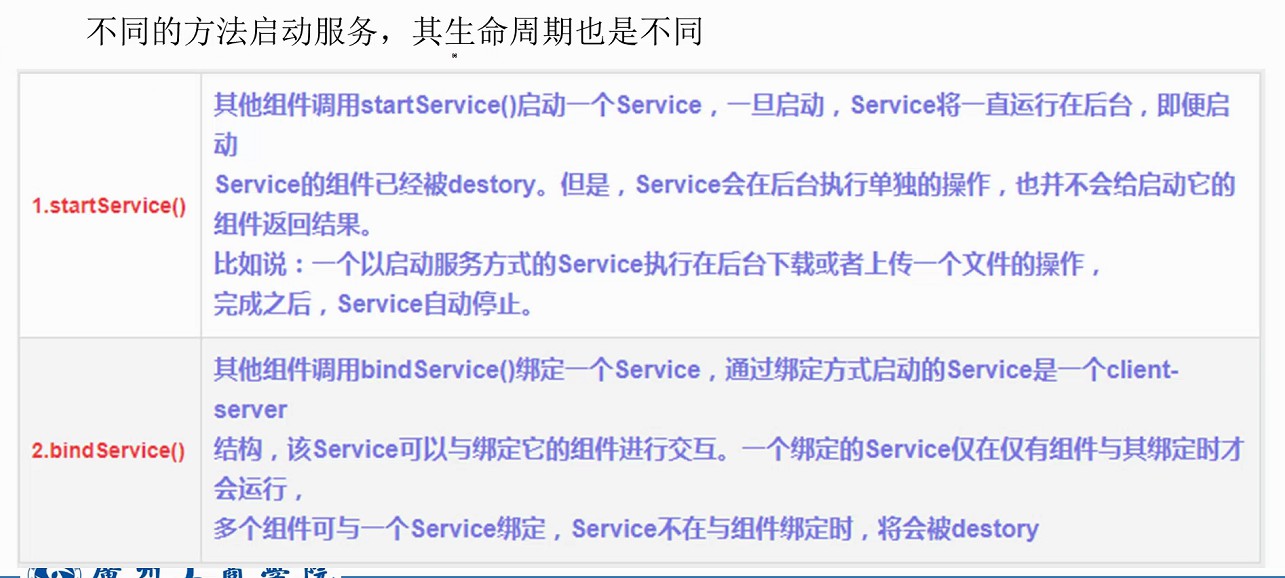
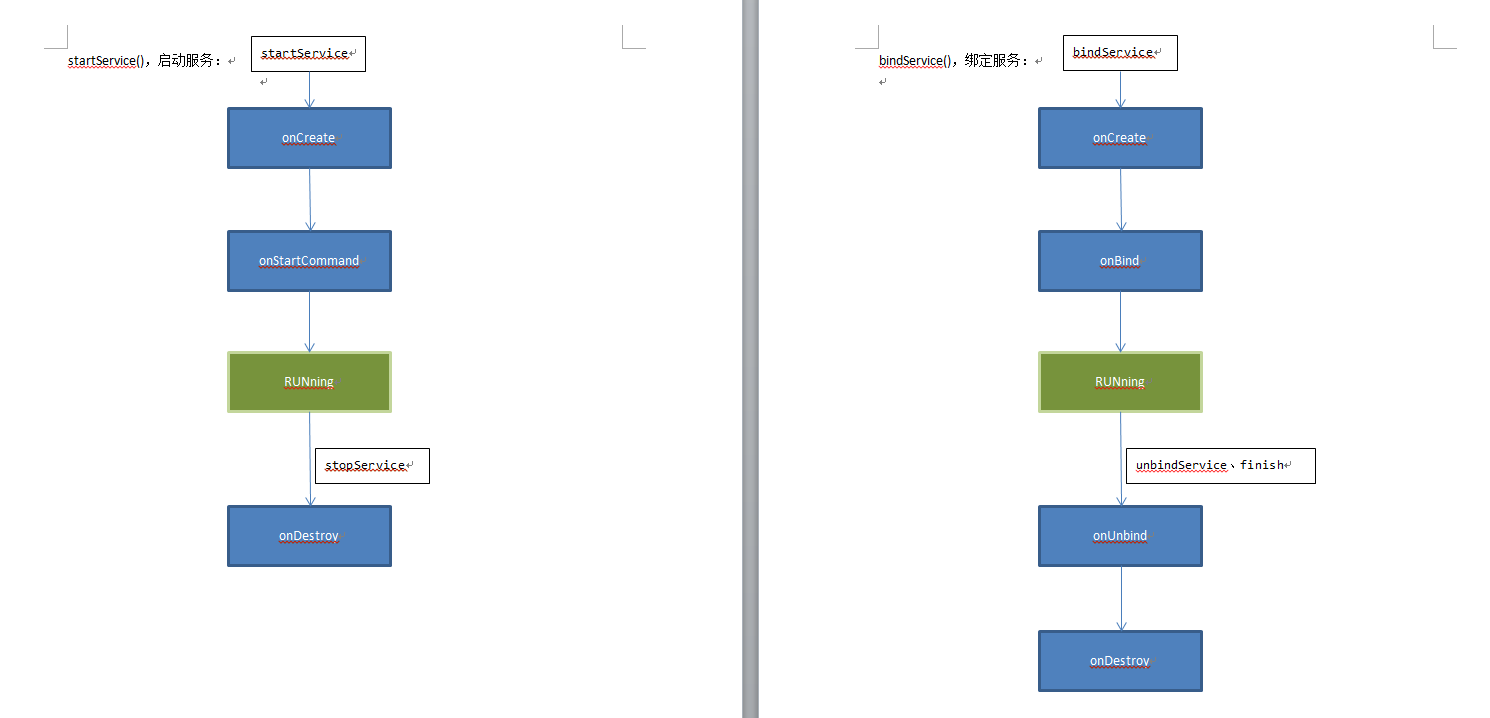
总结:
- startService(),启动服务
- 所以要执行的操作放在重写Service子类的onStartCommand方法中。(Intent对象传递数据)
- bindService(),绑定服务
- onBind方法中
代码演示
准备
新建一个Service类。
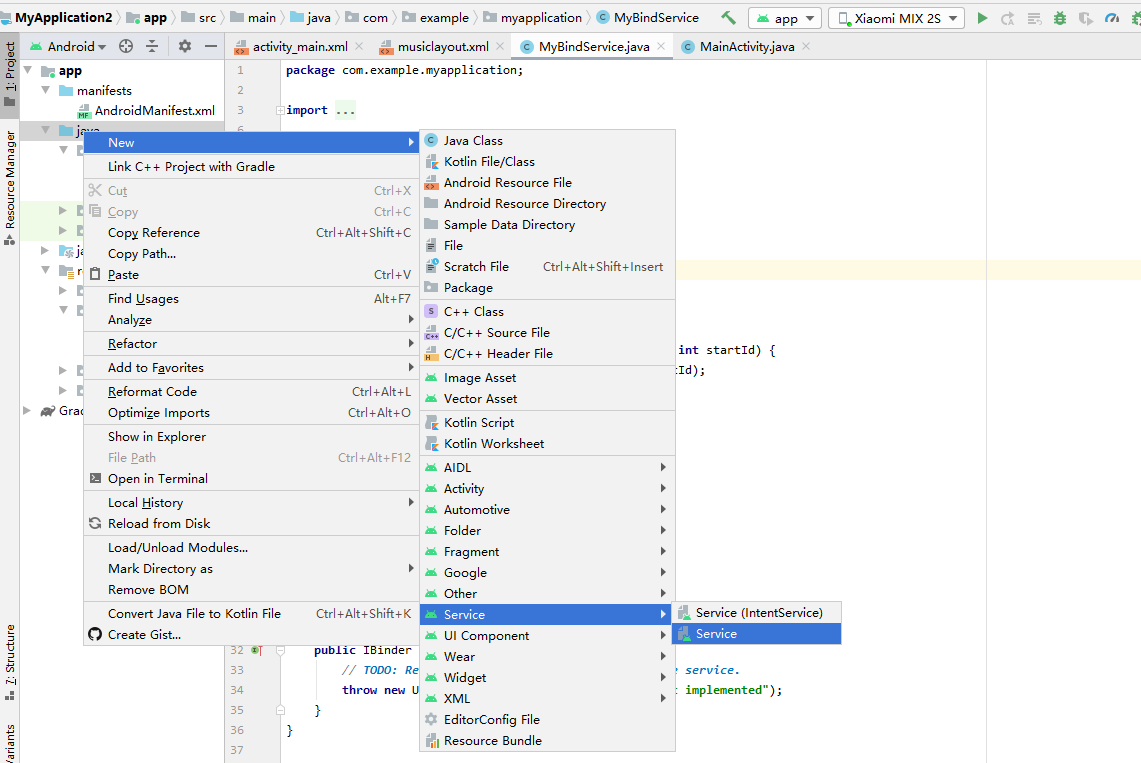
重写下边的几个方法,观察service生命周期。
1 |
onBind、onCreate、onStartCommand、onUnbind、onDestroy |

日志:
观察service生命周期,可以在重写的各个方法中添加日志调试语句:
Log.i("TAG","MyBindService onBind");
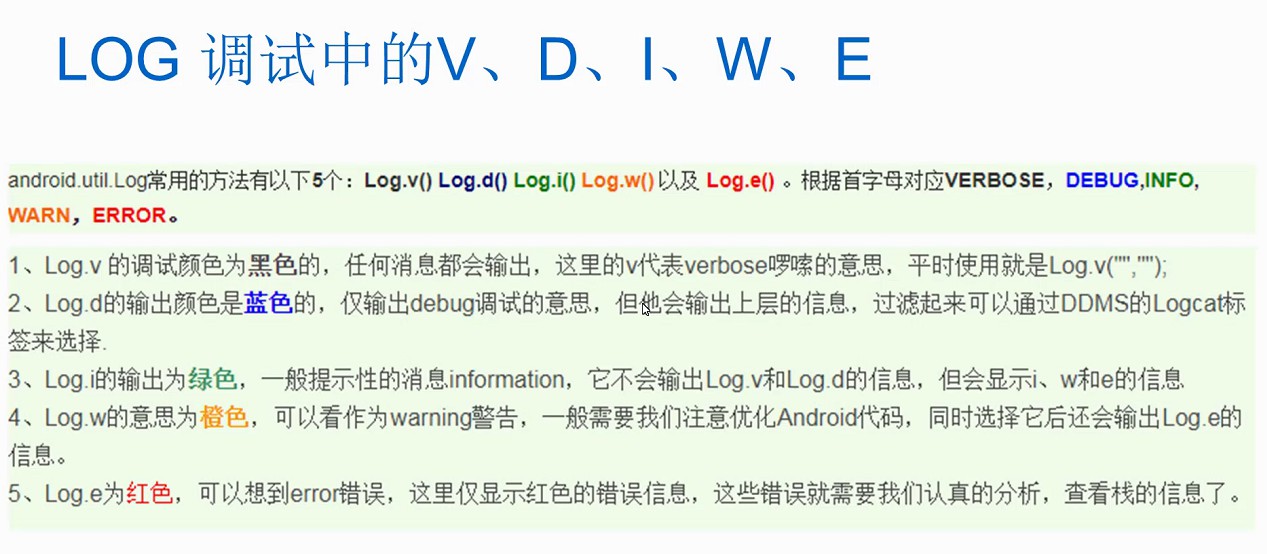
绑定服务
重写Service子类。创建类MyBindService并继承Service。要执行的操作放在重写Service子类的onBind方法中。
1 |
package com.example.myapplication; |
启动服务
重写Service子类。创建类MyStartService并继承Service。要执行的操作放在重写Service子类的onStartCommand方法中。
1 |
package com.example.myapplication; |
使用
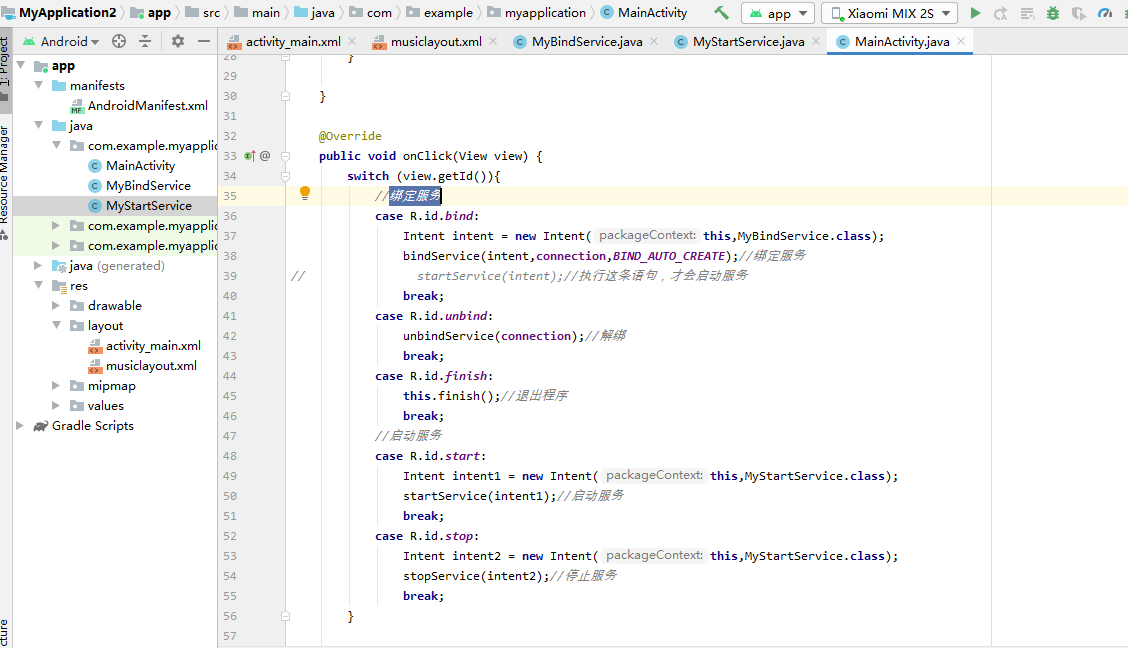
绑定服务
创建连接对象ServiceConnection
创建意图Intent对象
Intent intent = new Intent(this,MyBindService.class);- MyBindService为前边重写的Service子类
绑定服务
bindService(intent,connection,BIND_AUTO_CREATE);//绑定服务- connection为连接对象
解绑服务
unbindService(connection);//解绑
创建连接对象:
1 |
private MyServiceConnection connection; |
创建意图Intent对象、绑定服务、解绑服务:
1 |
Intent intent = new Intent(this,MyBindService.class); |
启动服务
启动:
- 创建意图Intent对象
Intent intent1 = new Intent(this,MyStartService.class);
- 启动服务
startService(intent1);//启动服务
停止:
- 创建意图Intent对象
Intent intent2 = new Intent(this,MyStartService.class);- MyStartService为前边重写的Service子类
- 停止服务
stopService(intent2);//停止服务
完整源码:
1 |
package com.example.myapplication; |
运行结果
由运行结果,可得到下图的生命周期流程图:


